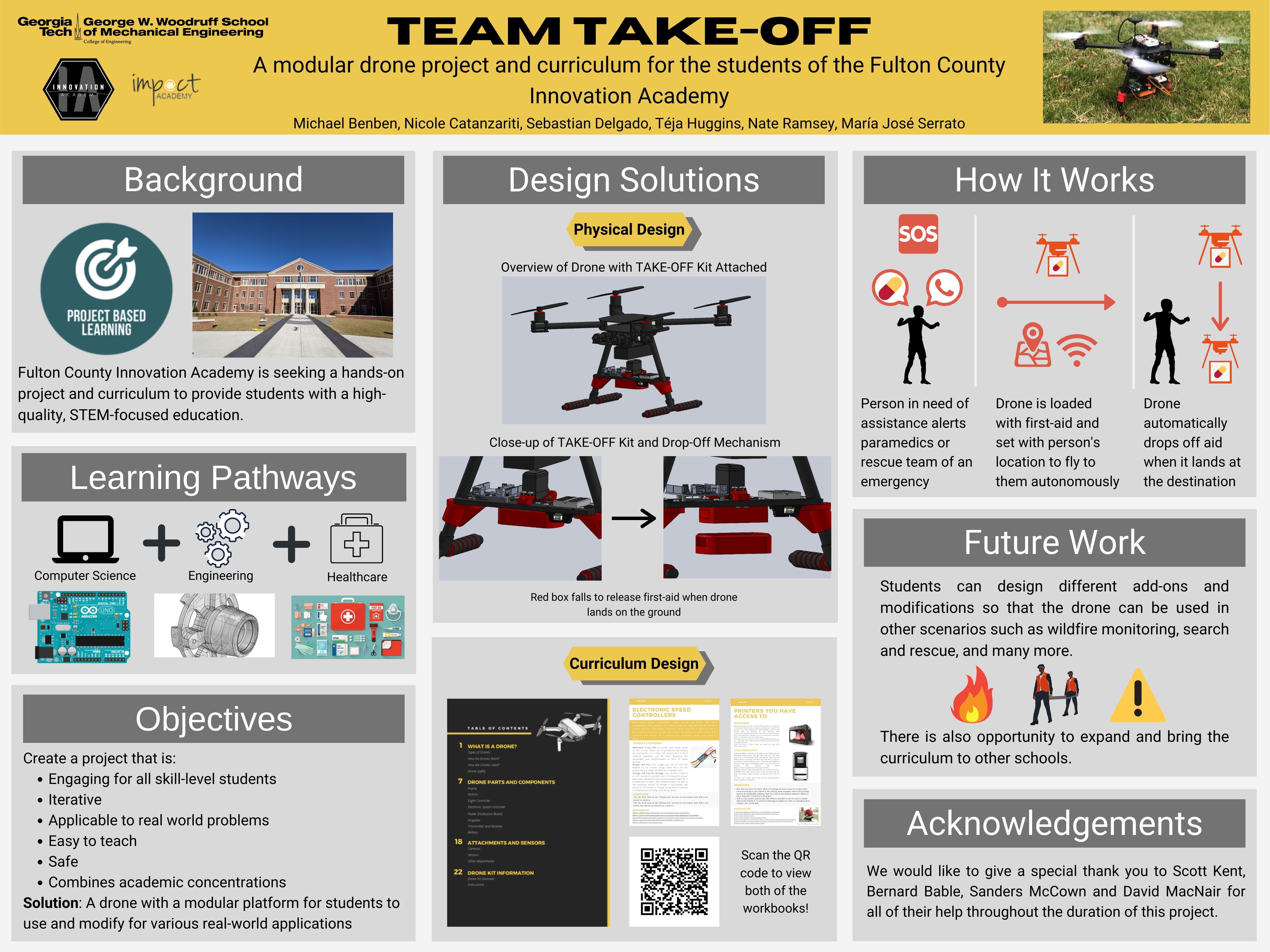For this Throwback Thursday, we interviewed Sebastian Delgado, a member of Team T.AK.E.O.F.F. Sebastian’s team helped design their “High School Startup Project,” where they created a plan to help teach students and teachers about the engineering field through the process of building a drone. With his teammates Teja Huggins, Nicole Catanzariti, Michael Benben, Maria Jose Serrato Gutierrez, and David Ramsey, he was able to present during the virtual Fall 2020 Design Expo.
Q: Could you give us a brief description of your project for those who may not know about it?
A: We created a platform for high school engineering projects. Students will be provided with a DIY drone assembly kit to learn about how different components interact with each other. Additionally, they will be tasked with designing and implementing a delivery system on that drone to potentially be used in real world situations (medical deliveries, search and rescue, etc). We designed a delivery system prototype as an example of what the drone is capable of carrying. In order to assist the teachers and students throughout the learning process, we also provided 2 workbooks. They will teach students how drones work and will provide guidance in learning how to make additions to the drone (CAD, micro controllers, programming, 3D printing, etc.)
Q: Where did you first draw inspiration for the idea of the “High School Startup Project,” for your Capstone Design Project?
A: The team was very interested in creating a product that would help younger students learn and inspire them to become engineers. Additionally, we noticed that drones are a very exciting and growing product that would keep students interested and engaged.
Q: What was the creation process like and how did you and your teammates come together to finish your project?
A: The team was meeting regularly with representatives from the Fulton County Innovation Academy and Global Impact Academy to understand what type of project they were looking for. In these bi-weekly meetings, the team would update the sponsors with project progress. Additionally, we did a lot of research on existing drone project platforms geared towards high school students to learn about what was successful and what wasn’t. In order to complete the bulk of the work, the team was split into 2 “sub-teams”. Half of us were focused on creating the workbooks and writing the curriculum for the schools, and the other half of the team was focused on the physical design of the drone and drop-off mechanism. We were in constant communication as a team, so everybody knew what was going on at all times. Additionally, we would have frequent team meetings so that everybody was prepared to meet with the sponsors.
Q: What were some of the problems that you faced along the way and how did you overcome those obstacles?
A: It was tough to present project updates with the sponsors without being able to meet regularly in person. In order to make virtual meetings as productive as possible, short PowerPoints were created for each meeting. If physical additions needed to be shared, somebody would bring the drone up to the camera and zoom in on specific components. Also, CAD models were created and presented by screen-sharing to show how small components functioned. At the beginning of the design phase we were focused on trying to design a drone from scratch and noticed that would have been incredibly time-consuming and inefficient to the ultimate goal of creating a project that teaches high school students. We decided it was more worth our time to choose a DIY kit off-the-shelf and focus on having students focus on designing/programming additions to the drone instead of just reading through our engineering models and drawings.
Q: How did it feel to present your project virtually during this pandemic?
A: It was a little difficult because it’s hard to use gestures to present points on the project. You can’t really point at things very easily, or show how something moves. In order to prepare for these, a lot of videos and short animations had to be prepared in case questions were asked about specific components.
Q: What do you think made your team successful in creating a model to educate students and teachers alike in the engineering field?
A: We believe that our project was successful because it was created for a big range of experience levels. The provided workbooks are perfect for students/teachers who have no idea how drones work, and for those who know how drones work but don’t know how to make additions to them. The workbooks combined with the open-ended challenge of creating a drone delivery system allow for students and teachers of all drone experience levels to learn and participate in our project model.
Q: Do you have any advice for future teams?
A: Stay on top of the school work (reports, presentations, etc) needed for the capstone class. It is very easy to focus on making progress in designing a product, so a lot of teams get stuck having to cram a 30 page report into a few days of work. As your team makes progress in certain components of the design process go ahead and start creating the figures needed for the report and write a couple paragraphs about it.


